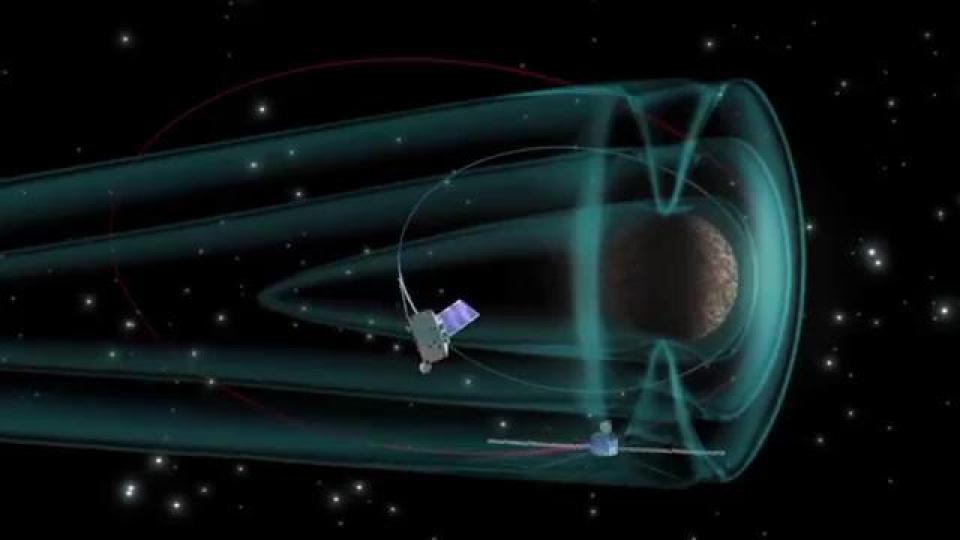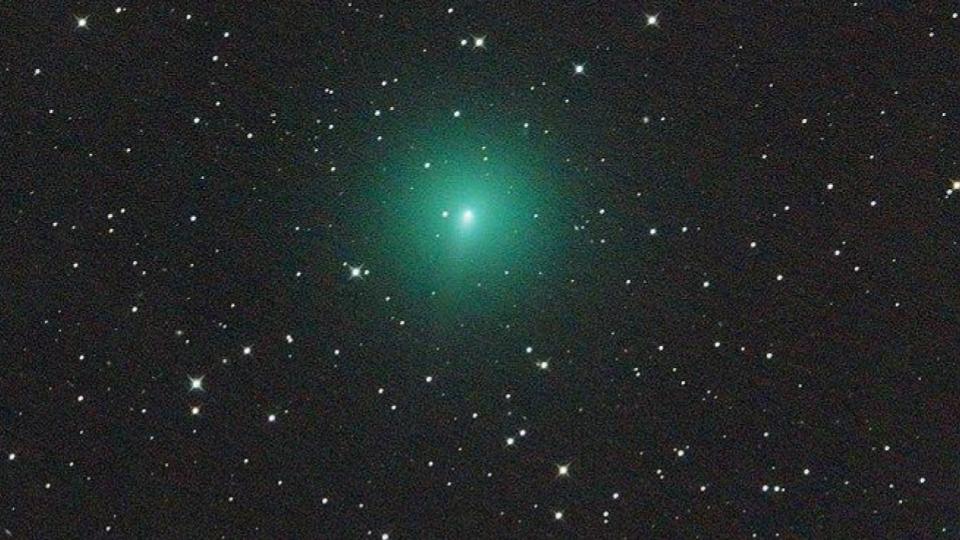
Winds from a quasar in a distant galaxy are fleeing at a record rate, ESA’s Bepicolombo mission to proceed with flyby in spite of COVID-19, and Comet Atlas is on display in the night sky for all to enjoy.
Links
Quasar winds flee a distant galaxy
- Quasar winds with record energy levels were seen fleeing a distant galaxy (ScienceNews)
- Focus on HST/COS Observations of Quasar Outflows in the 500–1050 Å Rest Frame (IOPScience)
Bepicolombo to conduct flyby of Earth
- ESA to conduct BepiColombo flyby amid coronavirus crisis (ESA)
- Bepicolombo – Exploring Mercury (ESA)
- Science With Bepicolombo (ESA)
Comet Atlas brightens the sky
- How to see bright Comet ATLAS (Earth and Sky)
Transcript
This is the Daily Space for today, Tuesday, March 31, 2020.
Welcome to the Daily Space, I am your host, Dr Pamela Gay, and I am here to put science in your brain. Most Mondays through Fridays either I or my co-host Annie Wilson will be here, bringing you a quick run down of all that is new in space and astronomy.
On what should be the last day of March, we’d like to share that this year there will be no April 1 episode of the Daily Space. Instead, we have decreed that tomorrow will be March 32, and Rocket Wednesday will bring you no foolishness in trickery, because let’s face it, sometimes you just want a bit of normalcy.

In general, the universe doesn’t really do normal. Every galaxy seems to be finding it’s own way to be the biggest or smallest or flattest or roundest. If there is an adjective to be had, there is probably a galaxy to be the most or least of that descriptor, at least in the eyes of some astronomer.
In today’s first story, we look at the galaxy SDSS J1042+1646. This system was spectroscopically observed with the Hubble Space Telescope. This means that the precise motions of different kinds of gases could be measured, allowing the velocity of the galaxy itself to be compared to the velocities of material streaming away. SDSS J1042+1646 is an active galaxy, with a feeding black hole that has an associated accretion disk that glows so brightly that we call this system a quasar. In looking at the materials flowing out of this system’s jets, astronomers could calculate that 5 million trillion trillion gigawatts of energy were escaping. This is 100 times less energy than the stars in the Milky Way produce! What’s particularly cool, is this system has been under observation for a number of years, and while the material was seen flowing at 1,550 km/s in 2011, new observations in 2017 showed the gas moving at 21,050 km/s! This is an 8% increase. This energy is associated with the increased energy of the accretion disk, and this is exactly the kind of energy that we’ve talked about before when discussing how galaxies essentially turn off, by blasting everything around their core away. This disk is giving off so much energy that it is triggering star formation, and whatever material doesn’t form stars is simply getting pushed away. When the current epoch of activity – both the active feeding of the black hole and the associated star formation – this system is going to take a long siesta. Star formation will be effectively over and the black hole will starve unless it is someday reawakened through a collision with another galaxy.
While we’d theorized systems like this, it’s amazing to see them caught in the act of energetically killing everything around them. And it wasn’t just this one galaxy. The system was discussed in 1 of 6 papers published in a special issue of the Astrophysical Journal Supplement series on March 16. These papers document a myriad of additional, less energetic but still fascinating systems.

Let’s face it, we could all use a little positive excitement right now. While I can’t offer you anything amazing right this moment, we do have two things that we need to be preparing for. The first is the flyby of the Bepicolombo mission on April 10. At 6:25 am Central European Time, this interplanetary spacecraft will approach within 12,700 km of Earth. This will put it significantly closer to us than geostationary satellites, and will allow it to use the Earth’s gravity to change its orbit to help it rendezvous with Mercury in late 2025. If you are at equatorial or southern latitudes, and you have a small telescope you can point at just the right place, you may be able to see this blip zip by. Observing tools and information on what ESA is going to be doing during the encounter will all be linked to from DailySpace.org, and if there are any streams to watch, we’ll be hosting watch parties on twitch.tv/CosmoQuestX. We’ll have more on this tomorrow, as guest host Gordon Dewis reviews the effects of COVID-19 on mission operations.

CREDIT: Martin Gembec at Wikimedia Commons
April and May actually have a lot of potentially cool things to offer. The comet Atlas continues to brighten in the northern sky. The Southern Hemisphere had comet McNaught a few years ago, and it is finally our time. This bright comet is readily visible in small telescopes as it arcs away from the big dipper. You can find its position in software like Stellarium as long as you have applied recent updates. While it is cool that it is visible in small telescopes, what is even better is that in late April and early May this comet has the potential to become the first major naked-eye comet of this century. According to Earth and Sky, some models predict that this comet will max out between +2 and -6 in magnitude. This makes its total light somewhere between the brightness of Betelgeuse… and brighter than anything else regularly in the sky. Note I said total brightness – that light will be spread out over the coma of the comet, so it’s not like you’ll be able to read by the light of this comet, but it still has truly amazing potential to add a reason to go outside and look up. Fair warning though, Comets have a tendency to periodically just plain fall apart, and sometimes the fizzle out. We make no promises, but I give it good odds that we will finally get ourselves a naked eye comet.
<———————>
As part of helping keep us all occupied in these really weird times, we’re going to be hosting a lot of additional content on our Twitch channel, and we want to remind you that CosmoQuest has an active community on Discord where you can talk science and even find other people to join you in playing some online games. You can find links to everything that is going on at CosmoQuest.org.
Thank you all for listening. Today’s script was written by Pamela Gay, and the Daily Space is produced by Susie Murph. The Daily Space is a product of the Planetary Science Institute, a 501(c)3 non profit dedicated to exploring our Solar System and beyond. We are here thanks to the generous contributions of people like you. The best way you can support us is through Patreon.com/cosmoquestx Like us? Please share us! You never know whose life you can change by adding a daily dose of science.


 We record most shows live, on Twitch. Follow us today to get alerts when we go live.
We record most shows live, on Twitch. Follow us today to get alerts when we go live.